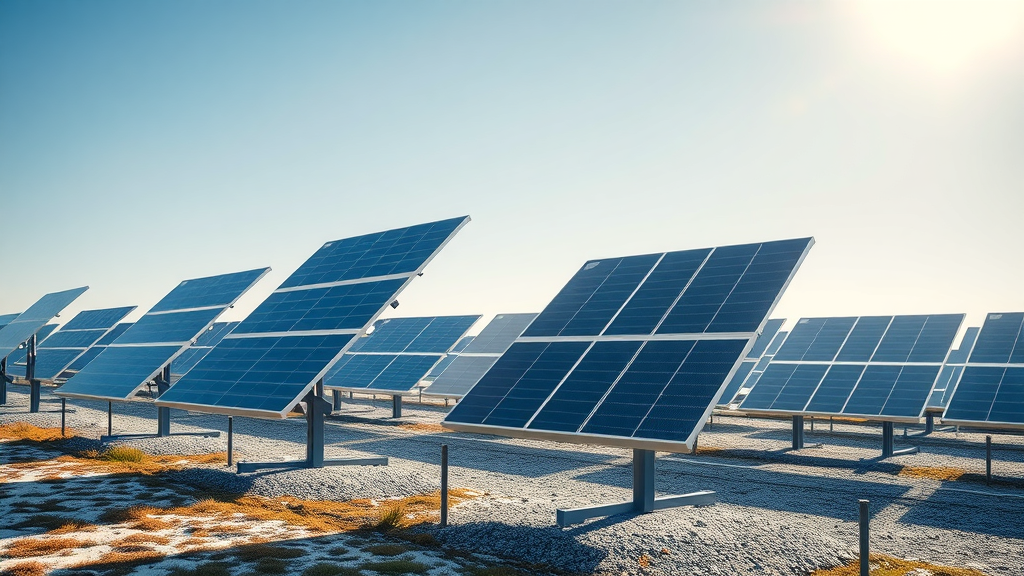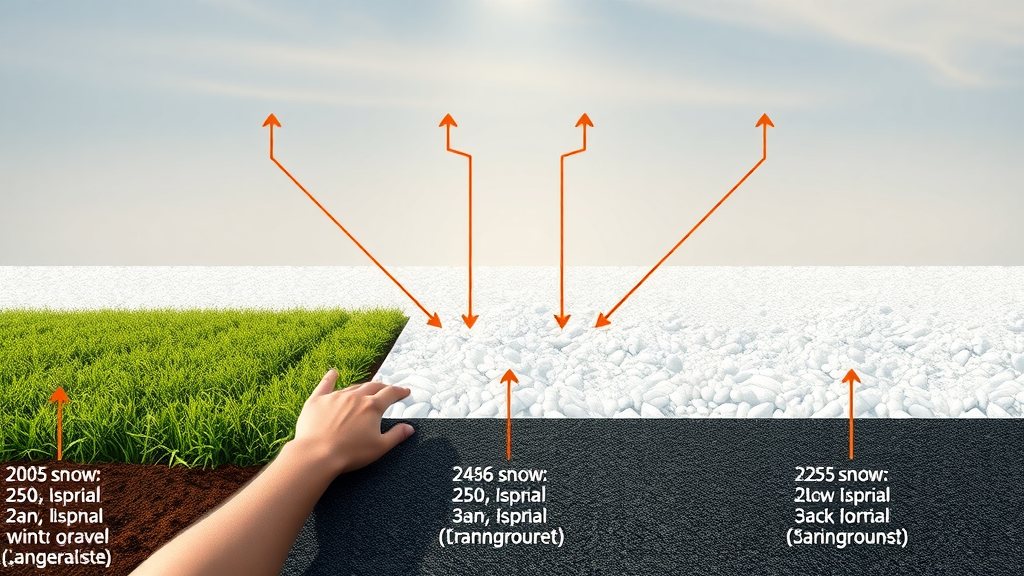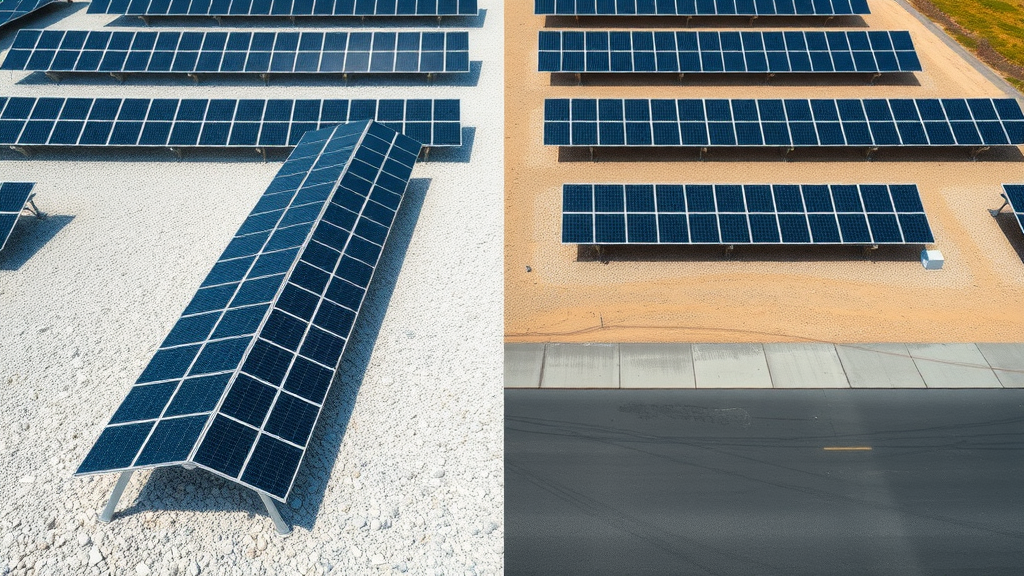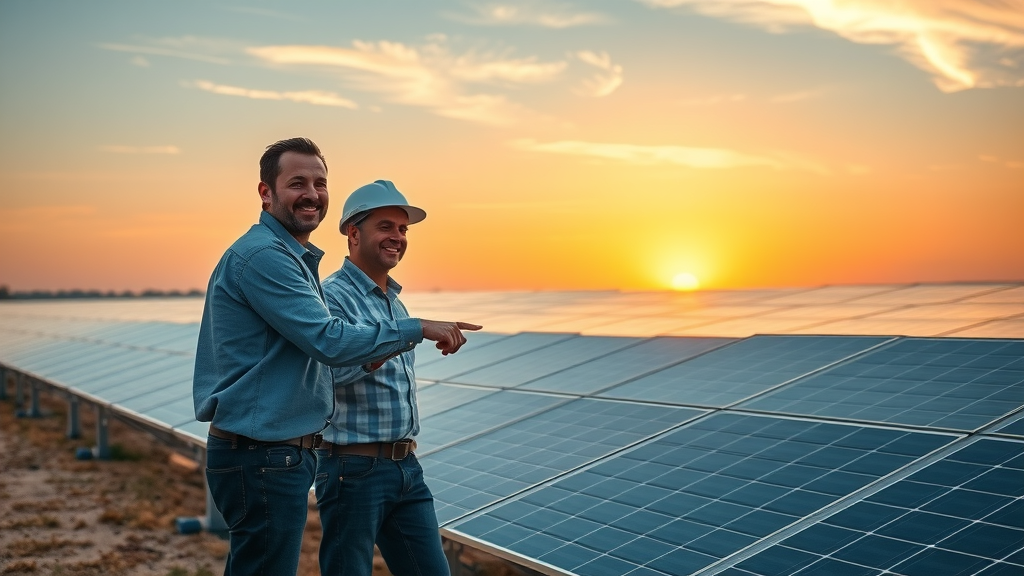
"Under optimal albedo conditions, bifacial solar panels can boost energy yields by up to 30%—reshaping the ROI landscape in solar projects."
Did you know that optimizing the reflection of sunlight off the ground—something as simple as the ground’s color and texture—can supercharge bifacial solar panel performance by an astonishing 30%? While traditional PV modules only capture sunlight from above, bifacial panels are rewriting the rules by harnessing untapped energy bouncing up from below. Through smart albedo management, solar developers are unlocking new levels of solar efficiency, outperforming conventional monofacial systems and redefining what’s possible for solar farms, commercial arrays, and custom energy projects alike.
What You'll Learn About Bifacial Solar Panel Albedo Reflection Coefficient Optimization
The fundamental role of albedo in bifacial solar panels
Key factors influencing the bifacial solar panel albedo reflection coefficient optimization
Practical strategies for maximizing bifacial PV module performance
Expert recommendations for site-specific bifacial module deployment
Understanding Albedo Reflection Coefficient: The Key Factor for Bifacial Solar Panel Performance
The albedo reflection coefficient is a critical parameter for anyone seeking to maximize bifacial photovoltaic module and pv module performance. In simple terms, albedo is the fraction of sunlight reflected from the ground back onto the rear side of a panel, rather than being absorbed or scattered. Bifacial photovoltaic modules are designed to capture direct sunlight on their front side and reflected sunlight—known as albedo—on their rear side, significantly boosting energy yield compared to traditional monofacial pv modules. The higher the albedo coefficient of the ground surface, the more light is available for conversion by the rear-facing solar cells, leading to a substantial increase in total energy yield.
Key factors influencing albedo include surface color, texture, and material. Light-colored and smooth surfaces, such as snow or white gravel, have high albedo values, reflecting large amounts of sunlight and boosting bifacial module efficiency. In contrast, dark or rough surfaces like asphalt or dense vegetation absorb more solar energy and offer lower reflectivity, limiting the performance gains from bifacial PV modules. This makes ground surface assessment and intentional management one of the top priorities when planning or optimizing a bifacial solar project. By carefully selecting or modifying the ground cover beneath and around PV modules, developers and engineers can significantly influence solar output across the lifespan of the installation, directly impacting the ROI of utility-scale solar farms and commercial systems.
How Albedo Reflectivity Impacts Bifacial PV Module Efficiency

Albedo reflectivity is the secret sauce behind the superior performance of bifacial photovoltaic modules and their solar cells. When sunlight strikes the ground, a portion of it is reflected upward. This reflected light, if harnessed by the rear side of bifacial solar panels, contributes additional power generation, a feature monofacial panels simply can’t match. The efficiency boost gained by bifacial pv modules depends not only on the solar cells within the panels but also on the quantity and quality of reflected sunlight available—which is dictated primarily by the ground’s albedo reflection coefficient.
For example, snow can possess an albedo value as high as 0.9 (90% reflectivity), while grass typically ranges from 0.18 to 0.25 and asphalt as low as 0.05. The greater the reflectivity, the more energy is delivered to the rear side of each panel, resulting in notable increases in total array output. Strategic ground cover choices and enhancements—such as deploying white gravel or reflective membranes—can dramatically boost the rear-side energy yield of a bifacial module system, maximizing the utility of the site and the investment in advanced bifacial photovoltaic modules. Thus, understanding and leveraging albedo is fundamental to superior performance in modern solar plant design.
Ground Surface Characteristics and the Albedo Effect on Solar Panels
The effect of the ground surface—its composition, color, and reflectivity—cannot be overstated when it comes to bifacial solar panel albedo reflection coefficient optimization. While direct sunlight delivers the majority of energy, the contribution from reflected light can represent up to a 30% gain, especially when paired with optimal ground materials. For project developers, this means considering natural seasonal changes (like snow cover in winter), the choice of materials beneath the panels, and the long-term stability of the ground surface.
High-albedo surfaces such as snow, white gravel, or engineered white membranes amplify rear-side irradiance, while dark or vegetated surfaces minimize it. Practical investments, like painting the ground white or choosing light-colored gravel, are now recognized as cost-effective means of enhancing energy yield in both new and retrofit installations. Not only does this boost electricity output, but it can also lower the levelized cost of energy (LCOE), making solar more profitable and sustainable over time. Smart site design—integrating data from satellite data and field measurements—enables accurate calculations of expected albedo, ensuring that every bifacial photovoltaic module operates at peak performance.
Comparative Albedo Coefficients for Common Ground Surface Types |
||
Ground Surface Type |
Typical Albedo Coefficient |
Impact on Bifacial Energy Yield |
|---|---|---|
Snow |
0.80 - 0.90 |
Maximum rear-side gain, highest energy yields in bifacial PV systems |
White Gravel |
0.40 - 0.50 |
High reflectivity, substantial performance increase for bifacial modules |
Sand |
0.25 - 0.40 |
Moderate albedo, moderate improvements in energy yield |
Grass |
0.18 - 0.25 |
Lower reflectivity, limited rear-side gain |
Asphalt |
0.05 - 0.10 |
Very low reflectivity, minimal bifacial advantage |
Strategies for Bifacial Solar Panel Albedo Reflection Coefficient Optimization
Fully leveraging bifacial solar panel technology requires not only installing advanced bifacial photovoltaic modules but also optimizing the underlying environment for maximum energy yield. A multi-pronged approach to albedo optimization ensures that bifacial modules achieve their potential, even in less-than-ideal natural settings. This involves three main angles: selecting installation sites with high inherent reflectivity, modifying ground characteristics with engineered materials or coatings, and tweaking PV system design for maximum rear-side irradiance. These strategies together maximize energy yield, minimize payback periods, and future-proof energy projects against shifting conditions.
Each method comes with its own engineering, logistical, and financial considerations. Site selection must balance solar resource availability, climate, and local surface types. Artificially increasing albedo—using paints, films, or light gravel—offers control and predictability, but requires regular maintenance and periodic reassessment as surfaces age or weather changes. Panel array configuration, including height, tilt, and row spacing, further modulates how well bifacial modules and their solar cells capture available reflected sunlight. With the correct mix, your bifacial PV module installation can achieve best-in-class energy yields.
Optimal Site Selection: Choosing Locations for Maximum Ground Reflectivity
The starting point for successful bifacial solar panel albedo reflection coefficient optimization is site selection. Ideal sites naturally combine abundant direct sunlight with ground surfaces boasting a high albedo value. Areas with persistent snow cover, pale sand, or naturally occurring light-colored stones inherently support greater rear-side gains in bifacial photovoltaic module systems. When developing new solar projects or considering retrofits, integrating local satellite data and surface reflectivity surveys can help pinpoint optimal real estate, reducing the need for ongoing ground treatment investments.
However, many installations are required where natural high-albedo surfaces are unavailable. In these cases, weighing the cost and practicality of artificial enhancements becomes vital. Developers must also consider seasonal and environmental changes that influence reflectivity—such as snow melt, vegetative growth, or even windblown dust. A comprehensive evaluation not only ensures higher energy yield from your bifacial modules but also informs project economics and long-term maintenance strategy, ultimately protecting and increasing return on investment (ROI) throughout the system’s lifespan.
Implementing Reflective Surfaces: Gravel, White Paint, Specialized Coatings

When natural ground conditions fall short, engineered reflective surfaces are the best solution for bifacial solar panel albedo reflection coefficient optimization. Options include spreading white gravel beneath and around panels, applying white paint or reflective coatings to concrete or compacted earth, and installing specialized reflective membrane films. Each of these materials can dramatically increase the coefficient of surface albedo, with white gravel and coatings frequently achieving up to 0.5—an ideal boost compared to bare soil or grass.
These strategies are not limited to new construction; they can be retrofitted into existing arrays to yield immediate energy gains. The choice between materials depends on local climate, budget, and maintenance capacity, but all have a significant impact on boosting the rear-side sunlight received by bifacial PV modules. Routine upkeep—such as repainting worn surfaces or replenishing light gravel lost through erosion—ensures sustained performance gains. When combined with data-driven performance monitoring, these low-tech enhancements can yield high-tech results for modern solar farms, significantly reducing the system’s LCOE.
System Design Tweaks: Panel Tilt, Height, Row Spacing, and Tracking for Higher Energy Yield
System design is the third pillar of optimized bifacial performance—and one that interacts closely with albedo management. Adjusting panel tilt can maximize the capture of both direct and reflected sunlight, especially when paired with adjustable or tracking racking systems. Panel height above the ground determines the “view” of the rear side; mounting modules higher often allows them to intercept more reflected light, though gains must be balanced against wind loading and installation costs.
Row spacing between panels is another key parameter. Wider gaps help to prevent mutual shading and promote more uniform rear-side illumination, especially when high-albedo surfaces are used beneath the array. Solar tracking systems that orient panels toward the sun throughout the day further boost both front and rear-side gains, especially in environments with variable albedo profiles. These system configuration tweaks, in combination with ground surface engineering, help unlock the full value of bifacial modules—delivering project-specific performance advantages whether in a utility-scale solar plant or a smaller commercial rooftop PV system.
Performance of Bifacial Photovoltaic Modules: Measurable Gains with Albedo Optimization
The superiority of bifacial photovoltaic modules and their solar cells becomes crystal clear in real-world performance data showcasing enhanced energy yield. Projects that deliberately integrate albedo optimization into their site design consistently report higher energy yields and superior long-term payoff from bifacial modules. When compared to conventional monofacial systems, bifacial panels on reflective ground surfaces showcase measurable and often dramatic boosts in annual electricity production—up to 30% or more in high-albedo scenarios.
Crucially, these energy yield gains don’t just benefit system owners; they also accelerate solar adoption by lowering the levelized cost of energy (LCOE) across the lifespan of the system. The combination of superior front- and rear-side electricity generation, enabled by customized site and system design, positions bifacial technology as a game-changer for large-scale solar deployments, industrial sites, and even advanced research PV modules.
Case Studies: Bifacial vs Monofacial PV Modules in Various Ground Conditions
Numerous field studies highlight the tangible performance of bifacial photovoltaic systems and pv modules across different climates and surface types, emphasizing the importance of albedo optimization. For instance, bifacial modules installed over snow or engineered white gravel have consistently achieved annual energy increases of 20–30% compared to monofacial benchmarks. In moderate climates with sand or pale soil, the rear-side gains average closer to 10–15%, while installations over dark asphalt or unmodified grass see marginal improvements.
These results underscore the importance of a holistic approach: combining high-albedo surfaces, optimal system design, and ongoing site assessment. Forward-thinking developers are now routinely measuring both front and rear irradiance with advanced sensors, using performance analytics to fine-tune operations. As the cost differences between bifacial and monofacial modules narrow, the ROI case for bifacial with albedo engineering grows ever stronger, making it a staple in modern solar energy infrastructure.
Energy Yield Comparison Table: Bifacial Solar vs. Monofacial Solar under Low, Medium, and High Albedo |
|||
Albedo Condition |
Monofacial PV Module Output |
Bifacial PV Module Output |
Estimated Performance Gain |
|---|---|---|---|
Low (e.g., Asphalt) |
1.0x |
1.03x – 1.05x |
3–5% |
Medium (e.g., Grass, Sand) |
1.0x |
1.10x – 1.15x |
10–15% |
High (e.g., Snow, White Gravel) |
1.0x |
1.20x – 1.30x |
20–30% |
"Careful albedo management not only increases output but also reduces the levelized cost of energy (LCOE) for solar projects."
FAQs: Bifacial Solar Panel Albedo Reflection Coefficient Optimization
What is the best reflective surface for bifacial solar panels?
Answer: The most effective surfaces for bifacial solar panel albedo reflection coefficient optimization are those with the highest albedo, such as white-painted concrete, snow, or specialized reflective membranes, as they maximize light reflection to the rear side of bifacial photovoltaic modules and enhance energy yield.
What is the 20% rule for solar panels?
Answer: The 20% rule refers to the guideline stating that bifacial solar panels typically generate up to 20% more energy than monofacial modules, given typical ground reflectivity—but this increment can increase under optimal albedo conditions.
What is the effect of spectral albedo in bifacial photovoltaic performance?
Answer: The spectral albedo impacts how efficiently certain wavelengths are reflected to the rear side of bifacial solar cells, influencing energy yield based on panel and surface spectral compatibility.
What is the disadvantage of a bifacial solar panel?
Answer: Disadvantages of bifacial solar panels may include higher initial cost, installation complexity, the necessity for optimized ground surfaces, and potentially diminished returns on sites with low natural albedo.

People Also Ask: Common Questions About Bifacial Solar Panel Albedo Reflection Coefficient Optimization
What is the best reflective surface for bifacial solar panels?
Answer: For bifacial solar panel albedo reflection coefficient optimization, engineered bright white materials, like white gravel or painted surfaces, offer maximal reflectivity and boost energy yield most effectively.
What is the 20% rule for solar panels?
Answer: The 20% rule for solar panels often refers to the average energy gain of bifacial photovoltaic modules over monofacial modules due to rear-side solar capture, assuming moderate ground reflectivity.
What is the effect of spectral albedo in bifacial photovoltaic performance?
Answer: Spectral albedo affects the performance of bifacial modules by impacting the quantity and type of light reflected, influencing the effectiveness of bifacial solar cell conversion at different wavelengths.
What is the disadvantage of a bifacial solar panel?
Answer: Main disadvantages include higher installation costs, complex site requirements for ideal albedo, and diminishing incremental gains in environments with naturally low-reflective ground.
Expert Recommendations and Future Trends in Bifacial PV Module and Albedo Optimization
Customizing ground surface treatments for project-specific needs ensures every site achieves its potential for rear-side solar capture.
Integrating bifacial tracking systems allows the panels to follow the sun and harness maximum albedo benefits throughout each day.
Monitoring albedo changes seasonally supports ongoing optimization, adapting to local weather, plant growth, and ground condition shifts.
Trending advances in bifacial modules and solar reflection strategies—such as new reflective films and smart analytics—are pushing energy yields higher each year.
See how albedo optimization changes rear-side solar capture—short animation showing impact of snow, gravel, and grass on energy output in bifacial solar arrays.
Key Takeaways: Optimizing Bifacial Solar Panel Albedo Reflection Coefficient
Albedo reflection coefficient is a critical variable in maximizing bifacial solar panel performance.
Ground surface selection and modification can deliver measurable gains in system output and ROI.
Careful system design—including panel height, tilt, and row spacing—further amplifies rear-side energy yield.
Continuous site assessment and flexible adaptation are essential for maintaining optimal solar LCOE as site conditions evolve.
Conclusion: Unlocking the Full Potential of Bifacial Solar Panel Albedo Reflection Coefficient Optimization
Final Thoughts on Harnessing Rear-Side Solar Capture for Renewable Energy Leadership

By prioritizing albedo optimization, stakeholders can unlock record-setting energy yields, achieve exceptional ROI, and lead in the transition to smart, sustainable solar energy.
 Add Row
Add Row  Add
Add 



Write A Comment